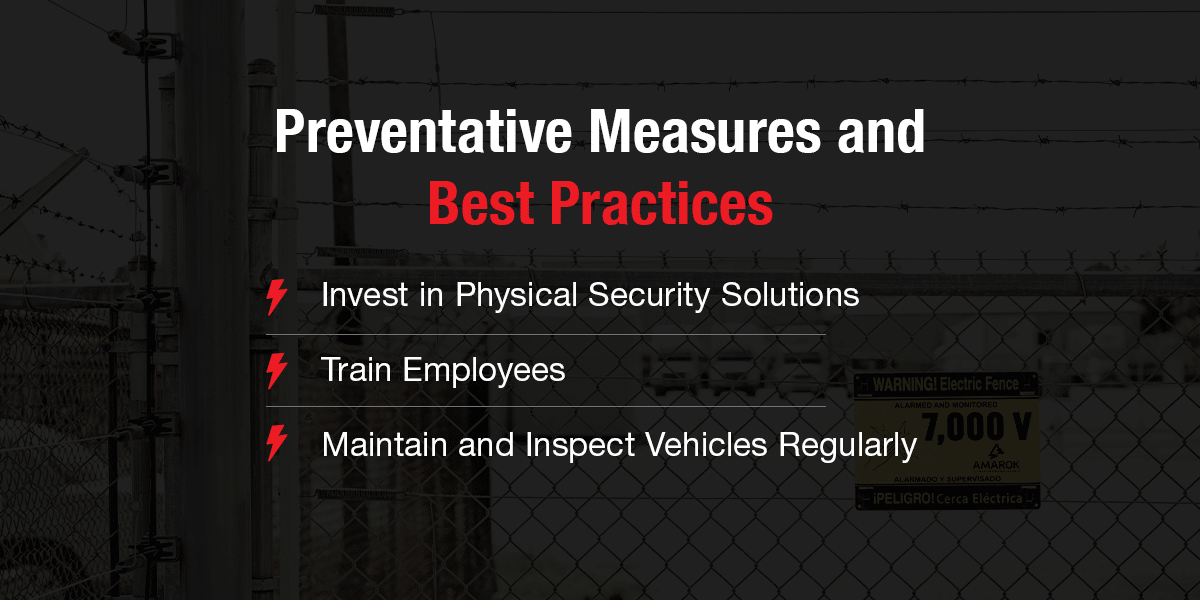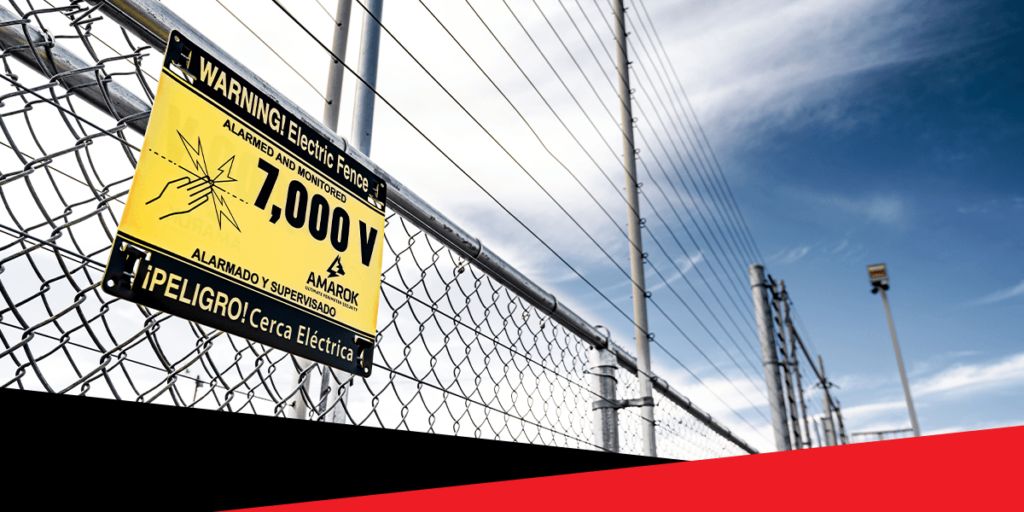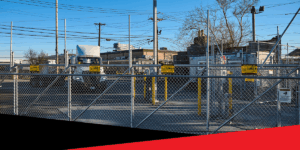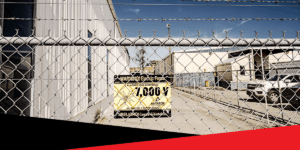Catalytic converters are essential parts of a vehicle’s exhaust system, stopping harmful emissions from being released into the air. These components contain precious metals like platinum, palladium, and rhodium — and as a result, catalytic converters are a prime target for theft.
Catalytic converter theft is one of the top theft trends for businesses, especially those with vehicle fleets. Stolen catalytic converters lead to costly repairs and downtime while waiting for replacements. It’s important to understand the effects of catalytic converter theft on your company and preventative measures you should take.
The Impact of Catalytic Converter Theft
The theft of catalytic converters affects various aspects of operations and finances. Here are a few examples of how catalytic converter theft can affect your business.
Reputation Management and Security Perception
A lower reputation is a primary effect of catalytic converter theft for organizations. Here’s a breakdown of the public’s perception of a business’s security and reputation:
- Increased security concerns: Regular theft incidents create an environment of fear and insecurity among customers and the general public. If a business is known for being a target, potential customers could choose to avoid the location and take their business elsewhere.
- Negative perception among the community: Businesses with high theft rates can be seen as unsafe or poorly managed. This perception impacts foot traffic and sales.
- Erosion of trust: People expect companies to protect their property and maintain a secure environment. If theft occurs frequently or even just once, businesses can lose customers’ trust.
- Lower employee morale: Employees may feel unsafe working in an environment where external theft is common. This insecurity leads to decreased morale, increased stress, and reduced productivity. Workers may even become hesitant to leave their vehicles in company parking lots.
- Turnover rates: If staff members feel that their safety is compromised, they may seek employment elsewhere. A high turnover rate leads to additional costs associated with hiring and training new employees.
Fleet Performance
Catalytic converter theft poses a significant threat to fleet performance. While most vehicles can technically operate without catalytic converters, doing so is not advised and can have legal repercussions. The absence of this vehicle part leads to poor engine performance — the exhaust operates louder, the engine is less fuel-efficient, and the vehicle eventually encounters stalling or idling issues due to improper exhaust flow.
Here’s how theft of a catalytic converter impacts a vehicle as well as businesses that depend on fleet performance:
- Operational downtime: The time required to source and install new catalytic converters leads to operational delays. Inoperable vehicles result in disrupted delivery schedules, services, and overall productivity.
- Increased costs: The price to replace a catalytic converter depends on the vehicle type — but repair costs always include the part, labor, and any damage to surrounding components. Frequent theft incidents can also lead to higher insurance premiums or insurance providers canceling their services. These increased costs further strain budgets and impact profitability.
- Lower fleet efficiency: With one or more vehicles out of service, the overall capacity of the fleet is diminished. Delays in fulfilling customer orders and commitments negatively impact customer satisfaction. In addition, the longer the business waits for replacement parts, the more that operable vehicles are overused, which could lead to increased maintenance expenses.
- Emissions violations: Operating a vehicle without a catalytic converter leads to increased emissions, which can result in regulatory fines and damage to the company’s reputation. Certain states like California require emissions testing. Vehicles without catalytic converters tend to fail these tests, preventing legal operation.
Perception of Sustainability
The loss of one or more catalytic converters within a business’s fleet undermines sustainability goals and has a long-term environmental impact in the following ways:
- Increased emissions: Without catalytic converters, vehicles emit higher levels of harmful pollutants, including carbon monoxide, nitrogen oxides, and hydrocarbons. These emissions contribute to air pollution and are linked to serious health issues such as cardiovascular disease, asthma, and certain cancers.
- Reputational damage: Theft of catalytic converters — and the resulting emissions if the vehicles continue to be operated — can tarnish a business’s reputation as a sustainable entity. Stakeholders, including customers and investors, are concerned about corporate responsibility and environmental impacts. If a company is perceived as failing to contribute to sustainability, it risks losing customer trust and brand loyalty. This reputational damage can have long-lasting effects on the organization’s position in the market.
- Health and community impact: Businesses that contribute to local pollution may face criticism from community members and environmental groups. Increased health issues lead to greater healthcare costs for the community, which may indirectly affect businesses through increased taxes like Medicare tax.

Preventative Measures and Best Practices
To effectively combat catalytic converter theft, businesses must implement a range of security measures and protocols.
1. Invest in Physical Security Solutions
Physical barriers serve as a strong deterrent to potential intruders. The presence of perimeter security solutions creates a perception of risk for would-be criminals, making them think twice before targeting a commercial property.
Physical security measures include:
- Electric fencing: Electric fencing provides a formidable barrier against intruders. The Electric Guard Dog™ Fence delivers a pulsed electric shock every 1.3 seconds, making it safe. If someone is brazen enough to attempt to breach the electric fence, it will trigger an alarm, sending you an alert.
- Security cameras: Use video surveillance systems to record suspicious activity in real time. Cameras are a good addition to a comprehensive, multi-layered security solution, providing compelling video evidence if theft occurs.
- Alarm-based security lighting: Implement an alarm-based security lighting system around your site’s perimeter. When the electric fence alarm is activated and unauthorized activity is detected, the lighting system floods the area with light. This immediate response helps deter intruders and alerts security personnel or residents to the potential threat.
2. Train Employees
Conduct training sessions to inform employees about the risks of catalytic converter theft and the importance of vigilance. Foster a culture of awareness where employees feel empowered to report any suspicious behavior or unauthorized individuals.
In addition, create a straightforward protocol for reporting theft and suspicious activity. Ensure employees know who to contact and what information to provide in case of an incident. Clear reporting procedures will help minimize downtime and operational disruption.
3. Maintain and Inspect Vehicles Regularly
Schedule routine inspections of all fleet vehicles to identify vulnerabilities, such as loose components or signs of tampering. Regular checks can help catch issues before they lead to theft. In addition, encourage maintenance that might deter external theft, such as ensuring vehicles are parked in secure, well-lit areas when not in use.
Protect Your Perimeter With AMAROK
With an integrated perimeter security strategy, you can protect your valuable assets from catalytic converter theft. At AMAROK, our solutions come with zero upfront costs to install — you only pay a manageable monthly subscription fee that includes unlimited maintenance service and repair as well as lifetime equipment upgrades.
Safeguard your vehicle fleets with industry-leading perimeter security solutions. Request a free threat assessment to start protecting your assets today.






